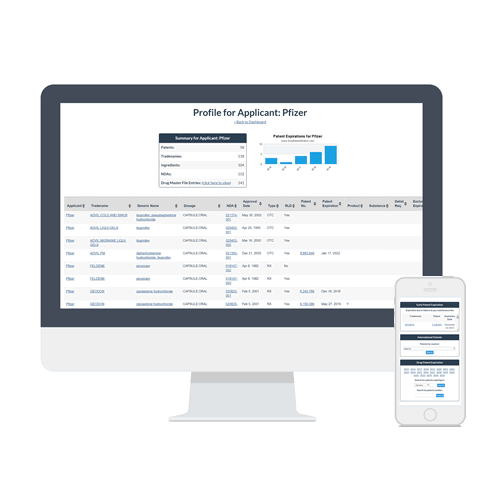 By: Pankaj Mondal, DrugPatentWatch Staff Writer
By: Pankaj Mondal, DrugPatentWatch Staff Writer
The US pharmaceutical industry is heavily competitive, with nine out of the top ten pharmaceutical companies based in the US. In recent years though, the market has become even more competitive both with branded and generic product segments. Major companies compete among themselves and practically all of them are active in production of drugs and R&D. For patented and branded products, competition is basically based on R&D and product innovation. Product innovation is costly and involves high levels of risk and also long lead times, with just one in 5,000 newly discovered chemicals actually becoming a medicine. Furthermore, only 30% of approved products recover their money spent on R&D, while it normally takes around 10 to 15 years and more than $1 billion to develop a new product. As a result, companies have to sweat it out and be distinct about how successful a new product will be. And competitor analysis is an essential element to facilitate the longevity of an accomplished product.
Understanding competition is imperative, especially during the drug development process as it’s not only a process to establish the most successful product or treatment for a condition, but also to research the market and identify your competitors.
Table of Contents
Pharmaceutical Competitor Analysis
Competitor analysis is an important component of a corporate strategy. However, most firms do not conduct this type of analysis systematically and operate on what is known as “informal impressions, intuition and conjectures gained through the morsels of information” about competitors which every manager receives on a consistent basis. As a result, many pharmaceutical companies use outmoded and superficial analyses that restrict their perceptions to a competitor’s corporate profile and product portfolio. Because of these shortsighted approaches, many companies are at risk of dangerous competitive blind spots and other competitive threats.
There are many areas of competitor pharmaceutical research and analysis that have to be determined to validate the drug development process. Some key elements that companies need to consider while developing a new product are patient research, pricing research, patient and physician segmentation, testing demand, assessments, and clinical trials. Cost is another important factor as putting funds into a product that is already overflowing a market is a futile exercise.
As the industry evolves to a more challenging product life cycle profile, drug companies need to implement innovative approaches for analyzing stakeholders, competitors and markets for their success. And the foundation lies in competitive analysis.
Some of the benefits that can be gleaned by conducting competitive analysis are:
- Understanding the market
- Targeting the right customers
- Economic climate tracking
- Market potential forecasting
- Competitor pricing
- Competitor product tracking
- Customer acquisition
- Tertiary market possiblities
Steps For Conducting Competitor Analysis
Finding the Right Team
The first step in conducting a systematic, insightful and multidimensional analysis is to find the right team. For any analysis, it’s important to have the ideal frameworks, processes and tools, which include a multidisciplinary team of internal consultants and external professionals if required. Firms should not solely depend on competitive intelligence dealers, who mainly focus on accumulation of data and competitive surveillance. Rather, they should use people with expertise in elaborate competitive analysis, planning, strategy and implementation. These professionals can provide proper methodologies, tools, and structures to lead and assist the development of a competitive analysis process.
Competitive Personality Analysis
Every company has a distinct personality and competitive personality analysis is unearthing the personality of a company. It addresses questions like “How a company thinks and acts?” “What is the competitor’s product profile?” “What will be the competitive differentiation?” “What salesforce will be used to back the competitor’s product”? etc. Based on corporate presentations, executive profiles, competitive intelligence and other information gathered by addressing such questions, the information will help penetrate a competitor’ head and understand their way of thinking and behavior in addition to their future course of action. Companies can predict and understand a competitor’s tactics by conducting a competitive personality analysis.
There are three main objectives of performing a competitive personality analysis:
- To understand the perception of your competitor towards your company
- Identify vulnerabilities and cover them up or counter them
- Identify opportunities to make the most of your company’s competitive advantages
Understanding how others perceive your company reflects your company’s profile. It helps to identify, profile and accentuate a company’s competitive tendencies, eventually preventing predictability as such competitors are an easy prey.
Many pharma professionals make the mistake of thinking that their company is not a part of the competitive mix; however, corporate self analysis is an indispensible part of competitive analysis. At the end of the day, checking out how other companies are behaving can help you brainstorm your own tactics.
Strategic Stakeholder Analysis
In today’s market when physicians prescribe a particular drug and patients want that drug, sometimes they end up buying a different brand. An important reason behind this is that the power of patients and doctors is slowly fading. A recent study found that less than 15% of chronic care prescriptions in the US are delicate while being physically promoted. Prescription power is now being transferred from patients and physical care providers to strategic stakeholders. These stakeholders include regulators, governments, policy makers, payers, professional societies, the media, health technology evaluation groups, retailers, distributors, patient advocacy groups, and those involved in the adoption, pricing, perception and utilization of branded products.
In most cases strategic stakeholders have an upper hand on drug sales compared to that of patients and doctors. Since stakeholders play a crucial role in the adoption and use of particular brands, a detailed analysis of strategic stakeholders should be a fundamental aspect of every competitive analysis. Understanding the stakeholder ecosystem of a particular brand involves stakeholder mapping and many other techniques. The competitor who best understands this ecosystem and its potential impact will gain a generous competitive advantage. In today’s world, companies have to move beyond focusing only on physicians, patients and pharmaceutical customers to agents who play a critical role on brand sales.
Market Winning Analysis
A holistic competitive analysis does not only take marketing and sales factor into consideration, but also various market and environmental factors like legalities, regulation, technology, partnerships, public policy, reimbursements, finances, distribution elements, and manufacturing. The analysis is conducted on different markets, geographies, and cultures besides past, present and future time frames. A proper market winning analysis identifies, prioritizes and weighs major market factors before rating each competitor, which includes their own company.
This analysis highlights the common phrase-the best defense is the best offence-and acts as a double edged sword as it takes a balanced view of competitive opportunities as well as threats. A market winning analysis takes a proactive approach by addressing the outcome when a competitor threatens and undermines your company. Furthermore, it incorporates strategies to force a competitor to react to the actions of your company.
SWOT Analysis
A SWOT analysis identifies and evaluates the strengths, weaknesses, opportunities and threats a company faces. This analysis is normally displayed in a two-by-two spreadsheet, designed to exhibit all four elements. The information gained can be used to analyze your company as well as that of your competitors. A SWOT analysis informs the upper management what the industry is outshining in, the improvements required, exploiting growth opportunities if possible and the preemptive measures that need to be taken to safeguard company or shareholder value. Weaknesses in pharmaceutical companies might crop up due to a strong dearth of marketing, market saturation, damaged reputation, lack of funds, licensing problems and staff issues.
Summing Up
A competitive analysis offers a wholesome and clearer picture and comprehension of a competitor’s behavior and possible actions. Companies using competitive analysis possess the necessary framework to bolster advanced competitive planning and a leading edge to stay ahead in a complex and multi-dimensional pharmaceutical world.

